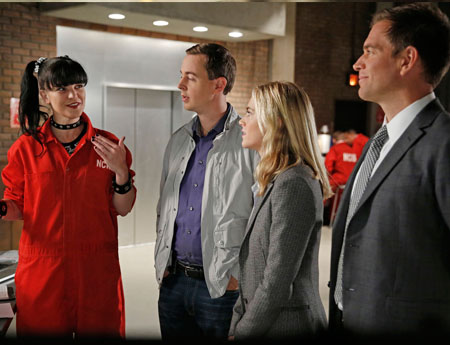Hollywood Eyes International Digital Gold

Despite massive changes in the international television business over the last decade, one thing has remained a constant—the enduring popularity of U.S. TV programming.
“From a quality perspective, the shows coming out of the U.S. are better than they have ever been,” says Jeffrey R. Schlesinger, president of Warner Bros. Worldwide Television Distribution. “They’re more varied in style and theme, the production values are extraordinary and they are universal in appeal. So the U.S. shows are in demand, the number of outlets is increasing and there seems to be a buyer for every genre of programming.”
Ben Pyne, president of global distribution at Disney Media Networks agrees, pointing to the fact that the October 2014 MIPCOM international TV sales market was the best attended since the global economic crisis of 2008. “Demand is as strong as it’s ever been,” he says. “As the ad markets rebound and new platforms launch, like Netflix expanding in Europe, we’re seeing more demand,” he says.
That doesn’t mean, however, that the major studios won’t see some challenges. Most broadcasters continue to program much of their primetime schedules with local programming, which limits the slots available for American shows. Meanwhile, the collapse of the ruble is raising major worries about the Russian market and the rising value of U.S. currency is making Hollywood exports a more expensive buy in the Eurozone.
“Advertising in Europe is coming back a bit, but the dollar is going against us,” says Schlesinger. “A strong dollar is never your friend in the export business.”
Piracy is also a major concern, adds Pyne. A recent analysis by Torrentfreak.com found that piracy continues to increase and that U.S. series topped its list of the 10 most pirated shows of 2014, led by Game of Thrones, with about 8.1 million downloads, followed by The Walking Dead (4.2 million downloads) and The Big Bang Theory (3.6 million).
TV advertising in major European territories that still produce the bulk of revenue from U.S. programming sales is also seeing relatively anemic growth, thanks to Eurozone economic woes and the ongoing shift of advertising to digital platforms. Vincent Letang, executive VP and director of global forecasting at Magna Global notes that in 2014, digital ad spend exceeded TV advertising in 14 countries around the world, including Germany, the U.K. and nine other European nations.
The smarter way to stay on top of broadcasting and cable industry. Sign up below
Digital Balancing Act
Studio executives stress, however, that those concerns are more than balanced by a number of positive trends, producing an overall bullish forecast for 2015.
For starters, the blockbuster production values and star power of major U.S. TV series still make them an attractive programming alternative. Even with the stronger dollar, they remain less expensive than many local productions, a dynamic that helped boost studio sales during the 2008 recession.
U.S. shows also continue to pull strong ratings, with last June’s annual Eurodata and the Monte-Carlo Television Festival rankings of the world’s most popular shows once again being topped by U.S. series. NCIS led the 2013 drama category with 57.6 million viewers worldwide while Modern Family was the most popular comedy and The Bold And the Beautiful led the soap and telenovela genre.
Those long-standing dynamics are also being strengthened by a number of newer trends. “There are a whole host of interesting new players that are very hungry for American content,” says Jim Packer, president of worldwide television distribution and digital and cohead of worldwide home entertainment at Lionsgate.
Serious Money
Netflix’s international expansion is the most obvious example of the trend but Packer and others note that there are now several subscription-video-on-demand players in many major territories. Schlesinger ticks off three over-the-top bidders for U.S. product in Australia, four in the U.K., three in Canada and two in France.
“They are paying serious money and stepping up significantly for product they want,” says Schlesinger, who adds that they recently sold Constantine to Amazon in the U.K. in the first window instead of placing it with a linear broadcaster. “It is creating more outlets for shows that aren’t quite as mainstream.”
Others agree. “I’m not looking only at the broadcasters as a launch pad for new shows,” says Packer, adding that the new platforms also create incremental revenue.
“People like to talk about this being the golden age of TV, but I think it is also the golden age of windows,” he says. “You can look at traditional windows and you can look at 19 other variations on them depending on the show and the dynamics of the market. When you’re going to market, that creates a lot of flexibility and gives you a lot of interesting cards to play.”
The studios have also been looking at the growing popularity of streaming media to launch their own products. Pyne notes that Disney has already launched digital services such as Hot from the U.S., and ABC Studios on Demand and Disney Movies on Demand in international markets.
Building on those efforts, they are now looking to expand TV Everywhere offerings outside the U.S. “We’ve launched the Watch Disney Channel product with StarHub in Singapore and with JCom [in Japan] and we’re looking at other territories as well,” says Pyne, who adds that such efforts are just “one example of the growing demand that makes us very upbeat about the market.”
